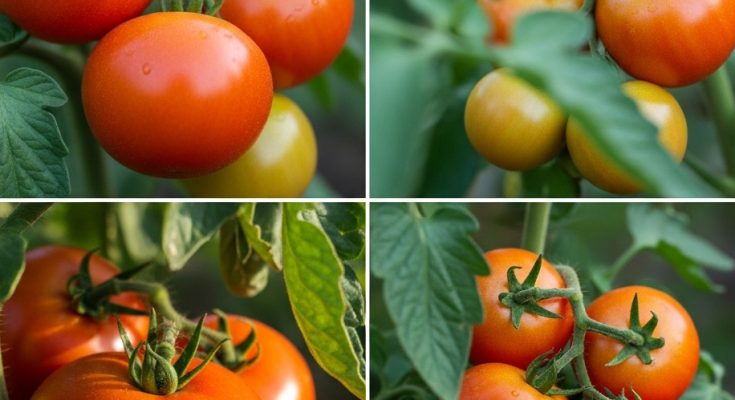The weather over the Balkans today is a mix of rain and sunshine, a combination that presents a significant challenge for vegetable growers and garden enthusiasts. This kind of fluctuating weather creates the perfect conditions for the development of various fungal diseases, with potato blight (Phytophthora infestans) being one of the most destructive. If this fungus attacks a plant, it can spread rapidly and completely destroy it, leaving gardeners without any harvest.
For those of us who practice organic gardening, chemical sprays are not an option. After all, if we were willing to consume chemically treated produce, we could simply buy them from the market. Instead, we rely on natural methods to protect our crops. One of the best organic solutions for preventing and managing potato blight is baking soda. This simple household ingredient has been used for decades to combat plant diseases naturally and effectively.
Understanding Potato Blight
Potato blight is a type of fungus that spreads through the air and the soil. If not controlled, it can devastate entire crops, leaving farmers and home gardeners alike with nothing to harvest. To protect your plants, it is essential to take preventive measures.
One of the primary ways potato blight spreads is through soil contact. If infected soil comes into direct contact with plant leaves, the fungus can quickly move upward and take over the entire plant. A common mistake many gardeners make is leaving lower leaves in contact with the soil, which provides an easy pathway for fungal infections. To prevent this, it is crucial to trim the lower parts of tomato plants so that no leaves touch the ground.
Another common mistake is using organic ropes to tie plants. While it may seem like a natural and eco-friendly choice, organic ropes can absorb moisture from the soil and become a breeding ground for fungi. When the fungus travels through the rope, it reaches the plant stem and can infect the entire plant. Instead, using plastic ropes for tying plants is a much safer option, as they do not absorb moisture and do not serve as a conduit for fungal spores.
Baking Soda as an Organic Fungicide
Baking soda has long been recognized as an effective organic remedy for fungal diseases in the garden. It works by making plant leaves more alkaline, which neutralizes and inhibits the growth of fungi like potato blight. Additionally, baking soda helps to strengthen plants, making them more resilient to diseases and pests.
Another advantage of using baking soda is that it enhances the taste of tomatoes, making them sweeter. This is because baking soda slightly alters the soil’s pH, which can positively impact plant health and fruit development. Moreover, baking soda has insect-repelling properties, discouraging pests from attacking your plants.
However, despite its many benefits, baking soda must be used with caution. It contains sodium, which, in excessive amounts, can harm plants by burning their roots and tying up essential nutrients in the soil. Overuse of baking soda can lead to slower plant growth and weakened resistance to diseases. For this reason, it is important to apply baking soda sparingly and only when necessary.
How to Prepare a Baking Soda Spray
To create a baking soda solution for spraying your plants, follow this simple recipe:
Ingredients:
-
- 4 liters (1 gallon) of water
- 1 tablespoon of baking soda
- A few drops of organic soap (such as goat’s milk soap or plant-based soap)
- 1 tablespoon of vegetable oil
Instructions:
-
- Mix the baking soda with the water.
- Add the organic soap. This helps the solution spread evenly across the plant’s surface.
- Add the vegetable oil, which helps the solution adhere to the leaves.
- Shake the mixture well before use.
Application Tips:
-
- Always spray plants from below, ensuring the underside of the leaves is covered.
-
- Avoid spraying during direct sunlight, as the combination of baking soda and intense heat can burn the leaves.
- The best time to spray is during the evening or when the sky is overcast.
- After each rain, reapply the spray to maintain its protective effect.
Additional Preventive Measures
While baking soda is an excellent organic remedy, the most important step in preventing fungal diseases is proper garden maintenance. Here are some key preventive measures to protect your plants:
-
- Trim Lower Leaves: Ensure that the lower leaves of tomato plants do not touch the soil. This reduces the risk of fungal infections traveling from the soil to the plant.
- Use Plastic Ties Instead of Organic Ropes: Avoid tying plants with natural fibers, as they can harbor fungi. Instead, opt for plastic ties, which do not absorb moisture.
-
- Monitor Weather Conditions: Be aware of weather patterns that promote fungal growth. If conditions are humid and warm, take preventive action immediately.
- Improve Air Circulation: Space out plants properly to allow good airflow, which helps prevent moisture buildup.
- Mulch Wisely: Use mulch to create a barrier between the soil and plant leaves, but avoid excessive moisture retention.
- Apply Baking Soda Only as Needed: Overuse can harm plants, so only spray when necessary.
Final Thoughts
Preventing potato blight and other fungal diseases in an organic garden requires a combination of proper garden management and natural remedies like baking soda. While baking soda is a powerful tool, it should be used wisely and in moderation. By maintaining good plant hygiene, using plastic ties instead of organic ropes, and keeping an eye on weather conditions, gardeners can effectively minimize the risk of fungal infections.
Ultimately, the goal is to create a healthy growing environment where plants can thrive without the need for synthetic chemicals. By adopting these organic gardening practices, you can enjoy a bountiful and chemical-free harvest while keeping your plants strong and resilient against diseases like potato blight.
